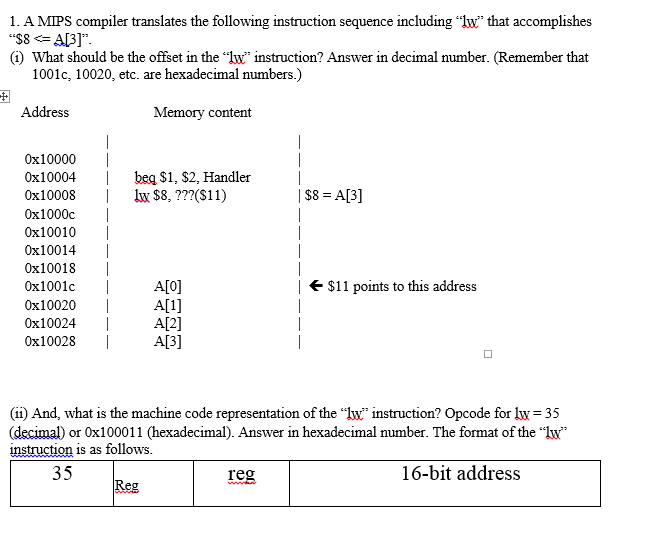

MIPS processors uses fixed-sized size instructions, where each instruction word is, well, a word (i.e. Which is MIPS ( 32-bit ) instructions branch maximum? Like branch, immediate jump value need to be word-aligned therefore, we need to multiply 26 bit address with four.
BEQ MIPS MAXIMUM JUMMP DISTANCE PC
Besides, jumps are relative to PC in MIPS. Jump Address Calculation For Jump instruction Mips has only 26 bits to determine Jump location. How is the jump address calculated in MIPS? The 26-bit target is extended to 28 bits by adding two 0’s on the right. The MIPS uses 32-bit addresses, but only allows 26 bits to specify an offset in the jump instruction.

If the leftmost 6 bits are 00001x, the instruction is an unconditional jump, and the remaining bits represent an offset from the PC. Some branch instructions include the branch target address in the instruction op-code, or include an offset whereby the branch target address can be easily calculated. The branch target address is the address of the next instruction if the branch evaluates as taken. If a function does not modify lr, then the return sequence can (and should) be a simple ” bx lr “. Is a function call a branch?įunction Calls Branch instructions with an l suffix - like bl and blx - work just like a standard b or bx branch, but also store a return address in lr. (Need 5 bits to uniquely identify all 32.) There are three instruction categories: I-format, J-format, and R-format (most common). Furthermore, if the branching crosses a page boundary, yet another cycle must be added to the execution time listed.īEQ does not affect neither the zero flag nor any other CPU status flag.There are 32 registers. If it does take the branch, execution takes one additional clock cycle. The listed time is valid only in cases where BEQ does not take the branch. The execution time for BEQ is not a fixed value, but depends on the circumstances. The relative address is treated as a signed byte that is, it shifts program execution to a location within a number of bytes ranging from -128 to 127, relative to the address of the instruction following the branch instruction. In the assembler formats listed, nn is a one-byte (8-bit) relative address. Execution continues here if "NumA " "NumB " Addressing mode OpcodeīEQ only supports the Relative addressing mode, as shown in the table at right. LDA NumA Read the value "NumA " CMP NumB Compare against "NumB "īEQ Equal Go to label "Equal" if "NumA " = "NumB " The zero flag is also affected as a result of comparisons (see CMP, CPX, and CPY), and so BEQ, and its counterpart BNE, is often used after a comparison to redirect program execution depending on whether the compared values are equal or not, e.g.: In this example, BEQ will take the jump if the byte retrieved from Number equals zero:īEQ Equal Go to label "Equal" if "Number " = 0 Since the zero flag is set if the result of an operation, or a byte retrieved from memory, equals zero, one of the uses for BEQ is to check for such zero results. If the zero flag is clear when the CPU encounters a BEQ instruction, the CPU will continue at the instruction following the BEQ rather than taking the jump. BEQ (short for " Branch if EQual") is the mnemonic for a machine language instruction which branches, or "jumps", to the address specified if, and only if the zero flag is set.


 0 kommentar(er)
0 kommentar(er)
